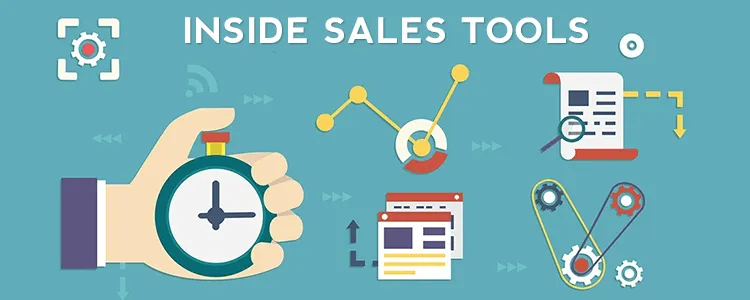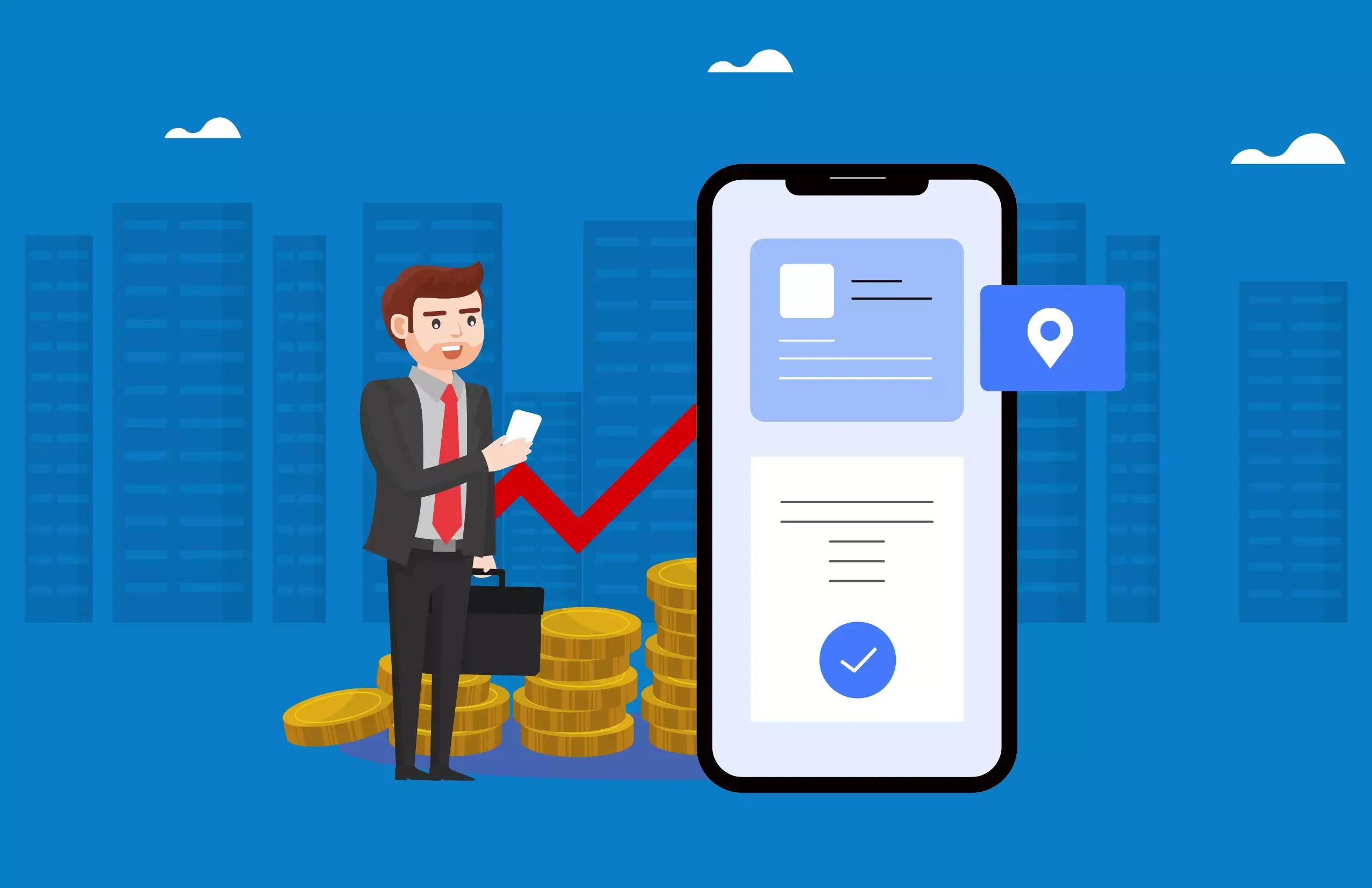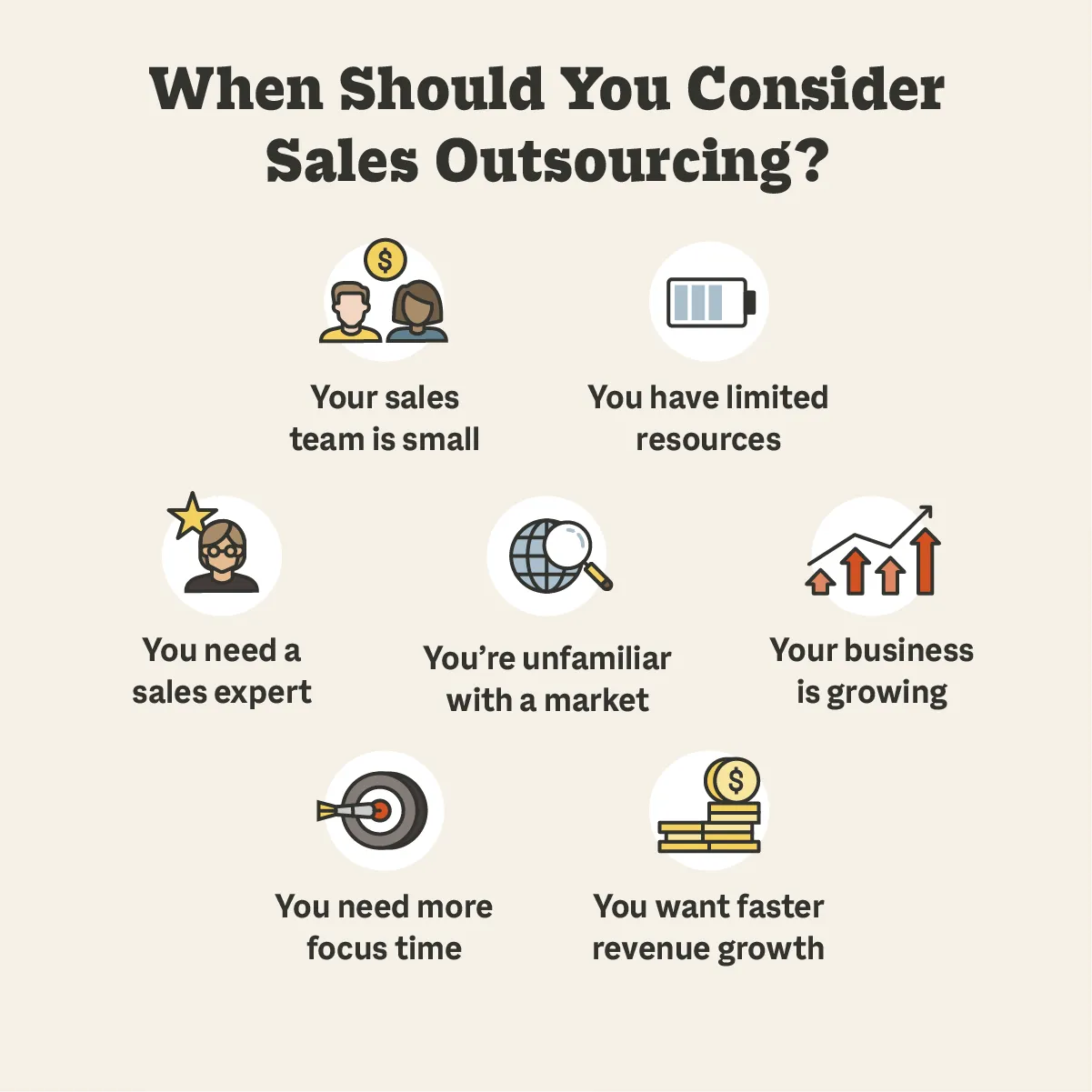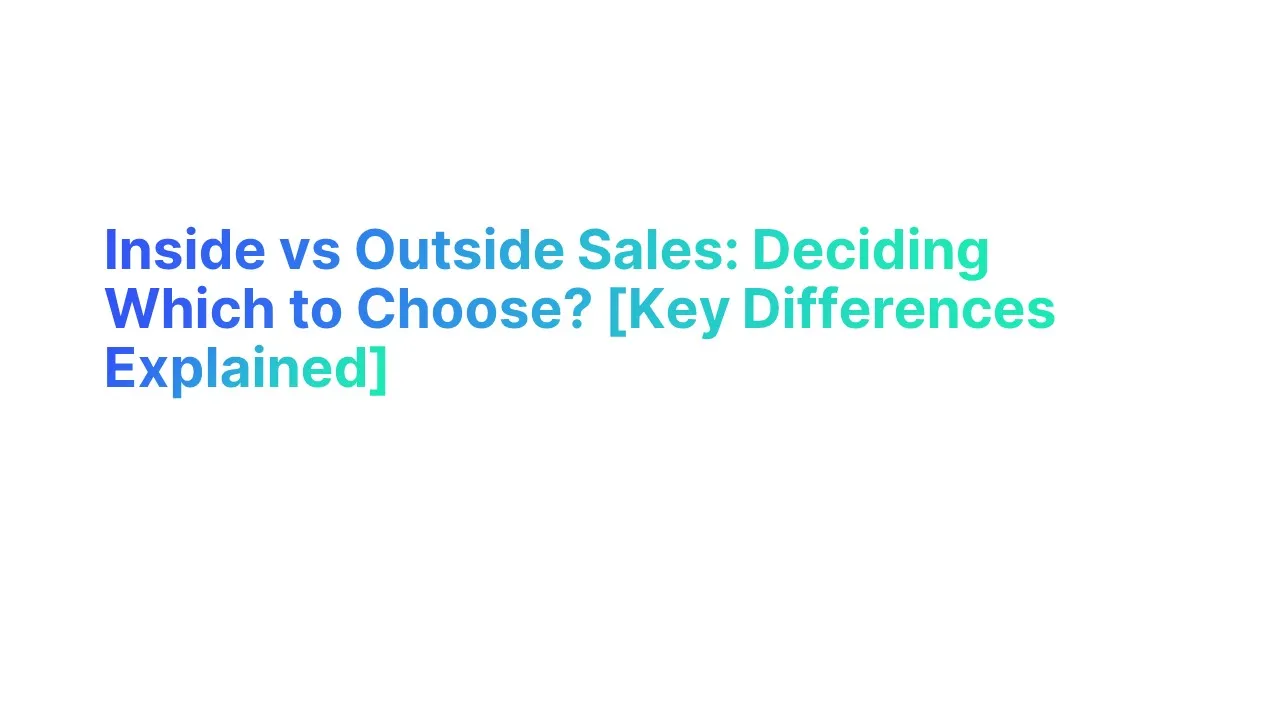What is Inside Sales

Inside sales is a modern sales approach where representatives sell products or services from an office or remotely, using technology like email, phone calls, and virtual meetings to interact with potential customers.
Benefits of Inside Sales
- Cost Savings: Inside sales significantly reduce the expenses associated with travel and face-to-face meetings. Businesses can save between 40% to 90% on travel expenses by utilizing an inside sales model, funneling those savings into other growth areas.
- Increased Productivity: With the help of sales automation tools and CRM software, inside sales reps can handle a higher volume of sales calls and follow-ups efficiently. Research shows that sales teams using CRM can increase their productivity by up to 34%.
- Wider Geographic Reach: Unlike outside sales reps, those in inside sales can reach potential customers worldwide without the need to travel, expanding the business's market reach exponentially.
- Shorter Sales Cycles: The inside sales process often results in shorter sales cycles due to the rapid follow-ups and efficiency in handling leads, contributing to faster revenue generation.
- Data-Driven Insights: The integration of technology in inside sales allows for the collection and analysis of data on sales performance and customer behaviors, enabling more informed decision-making and strategy optimization.
Inside Sales Reps Responsibilities
- Lead Generation and Qualification: Inside sales reps are responsible for generating new leads through cold calling, email marketing, and social selling. They qualify these leads based on their potential to purchase, using criteria such as need, budget, and decision-making power.
- Product Demonstrations: Utilizing video conferencing tools, inside sales reps conduct product demos for potential customers, highlighting features and benefits tailored to the customer’s specific needs.
- Sales Closure: They guide leads through the sales process, addressing concerns and objections, and ultimately closing sales. This includes negotiating terms and ensuring that the sales contracts are signed.
- Customer Relationship Management: Reps maintain and nurture relationships with existing customers through regular check-ins and updates on new products or services, contributing to customer retention and upselling opportunities.
- Market Feedback Collection: Inside sales professionals gather feedback from prospects and customers about the market and product reception. This feedback is crucial for the continuous improvement of products/services and sales strategies.
- Collaboration with Sales and Marketing Teams: They work closely with marketing to refine lead generation strategies and with the sales team to ensure alignment on sales targets and approaches.
Tools Used in Inside Sales Process

The inside sales process relies heavily on technology to bridge the physical gap between sales reps and their potential customers. With the right set of tools, inside sales teams can significantly enhance their productivity, efficiency, and effectiveness.
- CRM Software (Customer Relationship Management): Essential for managing customer information, tracking sales interactions, and forecasting sales. For instance, Salesforce reports that CRM applications can increase sales by up to 29%.
- Sales Engagement Platforms: Tools like Outreach and Salesloft allow reps to automate and personalize email sequences, phone calls, and follow-ups, increasing outreach efficiency by up to 30%.
- Video Conferencing Software: Platforms such as Zoom and Microsoft Teams enable face-to-face meetings with prospects, breaking down geographical barriers and adding a personal touch without the need for travel.
- Sales Intelligence Tools: Databases like LinkedIn Sales Navigator and Clearbit provide reps with valuable insights into potential leads, including job roles, company size, and industry, enhancing lead qualification processes.
- Sales Automation Tools: Automate repetitive tasks such as lead scoring and follow-up emails, allowing reps to focus on high-value activities. Businesses using automation report a 14.5% increase in sales productivity.
What is Outside Sales

Outside sales refer to the traditional sales process where sales reps meet face-to-face with potential clients to pitch products or services. This method hinges on building personal relationships through direct interaction, leveraging the human element to close deals.
Despite the rise of digital sales channels, outside sales remain crucial for many industries, particularly where complex, high-value transactions are common.
Benefits of Outside Sales
- Stronger Personal Relationships: The face-to-face meetings central to outside sales allow for the development of deeper personal relationships with clients. This connection fosters trust and loyalty, which are pivotal for long-term business engagements.
- High-value Deal Closure: Outside sales are particularly effective for closing high-value deals. Personal interactions provide a better platform for complex negotiations, which can result in more significant contracts, with studies indicating that outside sales can close deals 30-40% larger on average compared to inside sales.
- Detailed Product Demonstrations: In-person presentations enable outside sales reps to provide comprehensive and interactive product demonstrations, addressing immediate questions or concerns, which can significantly influence the purchasing decision.
- Market Insights: Being in the field allows outside sales reps to gain valuable insights into market trends, competitor activities, and customer preferences, enabling companies to adjust their strategies accordingly.
Outside Sales Reps Responsibilities
- Client Meetings and Presentations: Scheduling and conducting in-person meetings with potential and existing clients to discuss their needs, present product solutions, and negotiate terms. These interactions are crucial for establishing rapport and understanding client requirements deeply.
- Territory Management: Outside sales reps often manage specific geographic territories. This responsibility includes planning their travel efficiently to maximize face-time with potential and existing customers within their designated area.
- Customized Solutions: Crafting tailored solutions for clients based on their unique needs and challenges. This involves a deep understanding of both the product and the client’s business, requiring outside sales reps to possess a high level of expertise and flexibility.
- Networking and Relationship Building: Engaging in networking events, trade shows, and industry events to build relationships and identify new sales opportunities. These activities are essential for expanding the client base and staying informed about industry developments.
- After-Sale Support and Follow-Up: Providing ongoing support and follow-up to ensure customer satisfaction and to identify opportunities for upsells or renewals. Maintaining this continuous connection is vital for securing repeat business and referrals.
- Feedback Loop Creation: Outside sales representatives act as the eyes and ears on the ground, gathering feedback from clients and the market to inform product development and sales strategies. This direct feedback mechanism is invaluable for agile businesses looking to stay ahead of market trends.
Tools Used in Outside Sales Process

While outside sales reps benefit from some of the same tools as their inside sales counterparts, they also leverage technologies specifically suited to the mobile nature of their work.
- Mobile CRM Solutions: Apps like HubSpot Mobile CRM ensure that outside sales reps have access to customer data and sales materials on the go, providing real-time updates and notifications.
- Mapping and Territory Management Tools: Applications such as Badger Maps allow for optimal route planning, ensuring that reps can efficiently manage their territory and minimize travel time between meetings.
- Document Management and Signing Tools: Platforms like DocuSign facilitate the remote signing of contracts and agreements, speeding up the sales cycle and reducing paperwork.
- Portable Sales Presentation Tools: Tablets and lightweight laptops equipped with presentation software enable reps to deliver high-quality pitches and demos anywhere.
- Expense Tracking Apps: Tools like Expensify simplify the management of travel and entertainment expenses, providing transparency and ease of reporting for outside sales professionals.
Key Differences Between Inside Sales and Outside Sales

The key differences between inside sales and outside sales primarily revolve around the sales approach, tools used, cost implications, and the nature of customer interaction.
These distinctions not only influence the day-to-day activities of sales representatives but also affect the strategic direction of businesses' sales operations.
1. Sales Approach and Interaction
Inside sales involve selling products or services remotely via phone, email, or web conferencing tools. This approach has become increasingly popular, with Forbes reporting a significant shift towards remote selling strategies in recent years.
Outside sales, conversely, rely on face-to-face meetings with potential clients. This traditional method is particularly prevalent in industries where personal relationships and detailed product demonstrations are crucial for closing high-value deals.
2. Tools and Technology
Inside sales teams leverage a variety of digital tools, including CRM software, sales automation platforms, and video conferencing apps. Gartner predicts that by 2025, 60% of B2B sales organizations will transition to data-driven selling, merging external data with digital sales tools.
Tools for outside sales reps focus on mobility and efficiency in the field, such as mobile CRM apps, territory management software, and portable presentation equipment.
3. Cost Implications
Inside sales models are generally more cost-effective due to lower overhead expenses. Businesses can save significantly on travel and accommodation costs, with research indicating up to 90% savings compared to outside sales expenses.
Outside sales involve higher costs related to travel, client entertainment, and materials for in-person presentations. However, the investment in outside sales can yield a higher return for complex, high-value transactions.
4. Sales Cycle Length
The sales cycle in inside sales is typically shorter, as representatives can quickly follow up on leads and conduct multiple sales presentations in a single day without geographical constraints.
Outside sales cycles tend to be longer due to the time required for scheduling and conducting in-person meetings. However, this investment in time can lead to deeper customer relationships and larger deal sizes.
5. Client Relationship Building
Inside sales reps build relationships remotely, utilizing personalized communication and frequent virtual touchpoints to foster trust and rapport.
Outside sales rep often develop more personal relationships with clients through face-to-face interactions, which can be particularly beneficial in industries where trust and personal connection significantly influence buying decisions.
6. Target Market and Product Complexity
Inside sales are often more suited to selling simpler products or services that require less customization for individual clients. This model allows for a broader geographic reach without the need for extensive product demos.
Outside sales are typically favored for complex, customizable products or services that benefit from detailed, in-person explanations and demos, particularly in sectors like manufacturing, high-tech, and luxury goods.
Should you Outsource your Inside Sales Team?
Deciding whether to outsource your inside sales team is a strategic decision that can significantly impact your business's growth trajectory and sales pipeline efficiency. It's essential to weigh the benefits and drawbacks carefully, considering the specific needs and goals of your organization.
Benefits of Outsourcing Your Inside Sales Team
Cost Efficiency: Outsourcing can reduce operational costs associated with hiring, training, and maintaining an in-house sales team. Companies can save on overheads like salaries, benefits, and workspace. For instance, businesses have reported up to 50% cost savings by outsourcing parts of their sales process.
Scalability: Outsourced teams can be quickly scaled up or down based on business needs, providing flexibility that is particularly valuable in responding to market changes or seasonal demand fluctuations. This elasticity helps maintain a steady sales pipeline without the fixed costs of a full-time team.
Access to Specialized Talent: Outsourcing companies specialize in sales and often have a pool of experienced inside sales reps who can hit the ground running. These reps bring with them a wealth of experience and proven sales strategies that can be beneficial, especially in industries with longer sales cycles or complex products.
Focus on Core Business Activities: By outsourcing sales activities, your in-house team can focus on core business functions such as product development, customer service, and strategic planning. This division of labor can lead to a more efficient operation overall.
Enhanced Lead Generation and Qualification: Professional inside sales teams are adept at lead generation and qualification, ensuring that your sales pipeline is consistently filled with high-quality leads. This specialization can significantly improve conversion rates and sales volume.

Drawbacks of Outsourcing Your Inside Sales Team
Less Control Over Sales Process: Outsourcing may lead to less direct control over the sales process, potentially leading to misalignment with your company's culture and sales strategy. Ensuring that the outsourced team fully understands and aligns with your brand values and objectives is crucial.
Quality Concerns: The quality of interaction with potential customers may vary. There's a risk that outsourced inside sales reps might not have the same level of product knowledge or commitment to customer satisfaction as an in-house team, potentially impacting customer experience.
Communication Challenges: Working with an outsourced team can sometimes lead to communication challenges, especially if the team is in a different time zone or speaks a different language. Regular and clear communication is necessary to mitigate these risks.
Dependency on Vendor: Relying on an external vendor for your sales pipeline can create a dependency that might be risky if the vendor fails to deliver the expected results or decides to terminate the agreement.
When to Consider Outsourcing Your Inside Sales Team
Outsourcing your inside sales team can offer numerous benefits, including cost efficiency, scalability, and access to specialized expertise. It's particularly valuable for businesses looking to rapidly expand their sales capabilities without the overhead of hiring, training, and managing an in-house team. However, choosing the right partner is critical to avoid potential drawbacks such as lack of industry knowledge, cultural misalignment, and issues with brand representation.
Partnering with a Sales Specialist: Introducing Alore.io
For businesses contemplating the leap to outsource their inside sales team, finding a trustworthy and competent partner is paramount. Alore emerges as a strong candidate by providing tailored inside sales solutions that address common outsourcing concerns.
How Alore Improves Your Inside Sales Efforts
- Customized Sales Strategy: Alore works closely with clients to develop and implement sales strategies that align with their business goals and market dynamics. This bespoke approach ensures that the outsourced team operates as an extension of the in-house team, maintaining brand integrity and adherence to company values.
- Expertise and Experience: With a focus on inside sales, Alore.io brings a wealth of experience across various industries, equipping their teams with the knowledge and skills to engage effectively with prospects. Their expertise can help overcome the challenge of industry-specific knowledge that often plagues generic outsourcing solutions.
- Technology and Tools: Leveraging the latest in sales automation and CRM technologies, Alore.io ensures that outsourced sales activities are efficient, scalable, and transparent. Clients benefit from advanced reporting and analytics, gaining insights into sales performance and customer engagement without the need for direct oversight.
- Cultural Fit and Training: Recognizing the importance of cultural alignment, Alore.io prioritizes the selection and training of sales representatives who embody their clients' brand values and business ethos. This attention to cultural fit helps mitigate one of the most significant risks of outsourcing sales functions.
- Flexibility and Scalability: Whether looking to supplement an existing sales team during peak periods or seeking a full-time outsourced sales solution, Alore.io offers the flexibility to scale up or down based on business needs. This adaptability ensures that companies can respond dynamically to market changes without the constraints of fixed in-house resources.
Why Alore Stands Out
In a crowded marketplace of outsourced sales providers, Alore distinguishes itself through its commitment to customization, quality, and integration.
By addressing the typical drawbacks of outsourcing with a focused approach to inside sales, Alore represents a reliable and effective partner for businesses aiming to enhance their sales capabilities without compromising on quality or brand integrity.
Effective Sales Strategies for Inside and Outside Sales Teams

Developing effective sales strategies for both inside and outside sales teams is crucial for achieving business growth and staying competitive. While each approach has distinct characteristics, the core objective remains the same: to effectively reach and convert potential customers into long-term clients.
Let's explore strategies tailored to enhance the performance of both inside and outside sales teams, incorporating specific keywords where they naturally fit into the content.
For Inside Sales Teams:
Leverage Sales Technology: Embrace CRM and sales automation tools to streamline the sales process. Data shows that sales reps can see up to a 34% increase in productivity when utilizing CRM systems effectively. These tools help inside sales reps manage their leads, follow-ups, and sales pipeline more efficiently.
Personalize Communication: Tailor communications to address the specific needs and interests of each prospect. Personalized emails have been shown to deliver 6x higher transaction rates. Inside sales positions are well-suited to leverage data from CRM to customize messages and offers.
Enhance Sales Training: Continuous training programs can improve sales rep performance significantly. Studies indicate that ongoing training can yield a 50% higher net sales per employee. Focus on product knowledge, sales techniques, and technology use.
Implement a Structured Sales Process: Develop a clear, structured sales process that guides reps through each stage of the sales cycle. Companies with a formalized sales process experience up to 28% higher revenue growth.
For Outside Sales Teams:
Optimize Territory Management: Efficiently manage territories to minimize travel time and maximize face-to-face interactions. Using mapping and territory management tools can increase sales calls by up to 20%.
Focus on Relationship Building: Leverage the personal interaction advantage of outside sales to build stronger, trust-based relationships with clients. Face-to-face meetings are 34 times more successful than emails in generating responses.
Utilize Presentation Tools: Equip outside sales reps with the latest in presentation technology to deliver compelling, interactive presentations during client meetings. High-quality presentations can increase the closing rate by up to 43%.
Adopt Mobile CRM Solutions: Ensure outside sales teams have access to mobile CRM solutions that allow them to update customer information, access sales materials, and communicate with the team in real-time from the field.
Should Your Business Focus on Inside Sales or Outside Sales?
Deciding whether your business should focus on inside sales or outside sales is a strategic choice that hinges on various factors including your industry, product complexity, sales cycle length, and customer buying behavior. Both models have distinct advantages and can significantly impact your business's growth trajectory and customer relationships
Assess Your Product or Service: Consider the complexity of your offering and the need for in-person demos. Complex products with a high price point might benefit more from outside sales efforts.
Understand Your Customer's Buying Process: If your target market prefers personal interaction and relationship-building before making purchasing decisions, outside sales could be more effective.
Evaluate Sales Cycle Length and Cost: For businesses with a shorter sales cycle and lower average deal sizes, focusing on inside sales could be more cost-efficient and scalable.
Leverage a Hybrid Model: Many businesses find success in a blended approach, where inside sales reps generate and qualify leads, and outside sales reps close deals, especially for high-value opportunities. This model combines the strengths of both approaches to cover a wider market segment efficiently.
Concluding Thoughts
Choosing between inside sales vs outside sales boils down to your business needs and customer preferences. An inside sales rep works remotely, using technology to sell, which is cost-effective and offers a wide reach. Outside sales involve face-to-face meetings, building stronger relationships but at a higher cost. Your decision should align with your product, market, and how your customers prefer to buy.
Further Reading
Embark on a deeper exploration into the dynamics of inside versus outside sales with our specially selected articles. Aloré's blog offers a treasure trove of insights and strategies to guide you through the nuances of each sales approach, helping you make an informed decision tailored to your business needs. Enhance your understanding and sharpen your sales acumen with these essential reads:
- The Difference Between Sales and Marketing: Why It's Important: Unravel the distinct roles of sales and marketing in your business strategy. Understanding these differences is crucial for aligning your sales approach, whether inside or outside, with your overall marketing efforts. Discover the Difference.
- Maximizing Potential with Sales Leads: Dive into the art of managing sales leads effectively. This article offers valuable insights into nurturing leads in a way that suits your chosen sales approach, ensuring higher conversion rates and successful customer relationships. Learn More.
- Inbound vs. Outbound Sales: Get to grips with the core differences between inbound and outbound sales strategies. This comparison is essential for deciding whether inside or outside sales is more compatible with your business model and customer acquisition goals. Read Further.
- Lead Generation for Sales Reps: Discover innovative lead generation techniques tailored for sales representatives. Whether you're focusing on inside or outside sales, mastering lead generation is key to filling your pipeline with high-quality prospects. Dive Deeper.
- Sales Lead Generation: Elevate your lead generation strategy with actionable tips and insights. This article provides an in-depth look at generating leads that are more likely to convert, a critical component for both inside and outside sales success. Explore Strategies.





.jpg)

.jpg)
